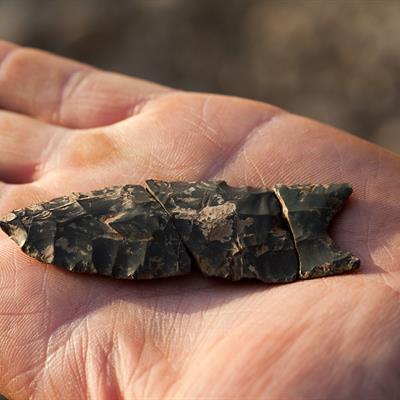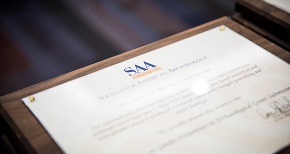Please be aware when registering, all times are in the Eastern Time Zone. Even for free events, you will need to click the "Proceed to Checkout" button and "Submit Order"
to complete your registration. If you do not receive an automated confirmation email, or if you have any questions about registration, please email
onlineseminars@saa.org.

Registration Closed!
Elemental Analysis with LA-ICP-MS for Archaeology
When: February 22, 2022 1:00-3:00 PM ET
Duration: 2 hours
Certification: RPA-certified
Pricing
Individual Registration: $99 for SAA members; $149 for non-members
Group Registration: $139 for SAA members; $189 for non-members
Laure Dussubieux, PhD, Field Museum
Laure Dussubieux is a chemist specialized in the determination of the compositions of ancient artifacts made from synthesized or natural glass, ceramic, stone or metal using laser ablation-inductively coupled plasma-mass spectrometry (LA-ICP-MS). She obtained her PhD in Chemistry from the University of Orléans, France, in 2001. Her research directly informs hypotheses about ancient and modern trade and exchange, technology, and their relationship to the development of social complexity around the world. She is a Senior Research Scientist at the Field Museum where, since 2004, she has managed the Elemental Analysis Facility.
Laure Dussubieux is a chemist specialized in the determination of the compositions of ancient artifacts made from synthesized or natural glass, ceramic, stone or metal using laser ablation-inductively coupled plasma-mass spectrometry (LA-ICP-MS). She obtained her PhD in Chemistry from the University of Orléans, France, in 2001. Her research directly informs hypotheses about ancient and modern trade and exchange, technology, and their relationship to the development of social complexity around the world. She is a Senior Research Scientist at the Field Museum where, since 2004, she has managed the Elemental Analysis Facility.
Laser ablation-inductively coupled plasma-mass spectrometry (LA-ICP-MS) has been used in the field of archaeology for close to three decades to measure the composition of ancient objects. It combines an analytical technique able to determine a wide range of elements with concentrations in the range of the ppm (parts-per-million) or lower with a quasi-nondestructive sampling approach. Indeed, one of the more interesting features of LA-ICP-MS is the use of laser ablation as a sample tool that leaves traces on the object that are invisible to the naked-eye. It is used for inorganic materials such as obsidian, synthetic glass, ceramic and metals. This analytical technique is used to understand ancient technology and determine the provenance of raw materials and the circulation of finished goods. After a description of the instrumentation and of the experimental conditions that are used, we will compare this technique with other well-established techniques such instrumental neutron activation analysis and x-ray fluorescence. We will discuss different case studies involving ancient glass, ceramic and metals to show how LA-ICP-MS can advance archaeological research.
- Describe the basic principles of LA-ICP-MS
- Compare LA-ICP-MS with other techniques used for elemental composition
- Explain the different ways it can be used (with advantages and limitations)
- Discuss the different questions that can be addressed with this analytical technique


